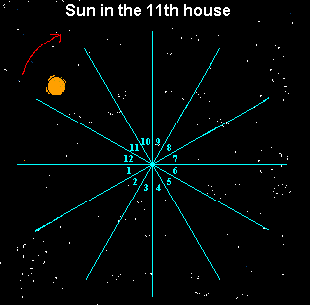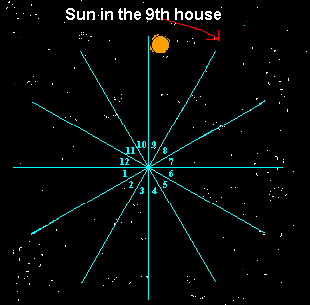Class 2
|
|||||||||||||||||||||
|
Today we will learn:
1. A little astronomy As we discussed in the previous class, astrology is a correlation of celestial events with behavior on earth. Here is a listing of some of the kinds of things that can be correlated:
As you can see from the above list, the behavior on earth does not necessarily need to be human behavior. Behavior of any animal, and even behavior of inanimate things, such as geological events and weather conditions are analyzed in astrology. We are familiar with the behaviors on earth. We all know what a rainy day is or what an earthquake is. However, we may not be as familiar with the other side of the correlation: how celestial bodies move in the sky and what celestial phenomena are important to astrologers. SOME BASIC ASTRONOMY As we all know from elementary and high school, we live on a planet called Earth, which is revolving around a star called the Sun, and the Earth is the third planet from the Sun.
Interestingly, many of us have a better understanding of how planets look from the point of view of a spaceship in outer space, even though we have never been in a spaceship, than we do of how the planets move in the sky from our position on Earth! There is one celestial body that all of us are very familiar with: the Sun! We all know that it rises in the East and sets in the West and it takes about 24 hours for the Sun to make its journey around the Earth. We also know (if we haven't forgotten everything we learned in elementary school and high school!) that the daily movement of the Sun across the sky is actually caused by the Earth spinning on its axis every 24 hours. We are all victims of a massive optical illusion! The Sun appears to be revolving around us, but in fact we on Earth are revolving around the Sun, and the Sun's movement around the sky is caused by the earth rotating on its axis. Most astrology is based on how the planets appear from our point of view on earth (geocentric perspective) rather than from the point of view of someone in a space ship above earth or from the point of view of the Sun (heliocentric perspective).
All of us are familiar with the daily movement of the Sun but are you familiar with the movement of the other planets? Test your knowledge by reading the following questions and then clicking on the "Answer" button to see if you know the answers to these questions. It is best to answer each question before reading the next question. From answering the questions in this quiz, you now know that all planets and most stars rise and set about once a day. Actually, there are some rare exceptions to this rule. If you live near the north pole or south pole, a planet can circle around the horizon, staying either slightly above or below the horizon. People who live near the north or south pole are very familiar with this phenomenon; the Sun will not set for many months, and during the other half of the year the Sun will not rise for many months! During the time that the Sun does not set, it also does not rise very far away from the horizon; it circulates around you not very far above the horizon.
Why is all of this rising and setting stuff important in astrology? Because astrologers divide the sky into 12 sections called houses. The houses are numbered from 1 to 12 and the planets travel backwards through the houses each day.

"A boy is looking at the sunset. The sun, of course, is just above the western horizon, at sunset. What house is it in?" [Click here to see the answer] On a typical day the Sun rises at about 6 AM. Of course, as you know, in summer the Sun rises earlier than this and in winter it rises later. Suppose that the Sun rises at 6 AM and sets at 6 PM. Then the Sun will travel through the houses at these times: The Sun is in the 12th house from 6 AM to 8 AM, the 11th house from 8 AM to 10 AM, the 10th house from 10 AM to 12 noon, the 9th house from 12 noon to 2 PM, the 8th house from 2 PM to 4 PM, and so on until it reaches the 1st house from 4 AM to 6 AM on the morning of the next day.
|
|||||||||||||||||||||
 |
|||||||||||||||||||||
 |
|||||||||||||||||||||
|
|
|||||||||||||||||||||



